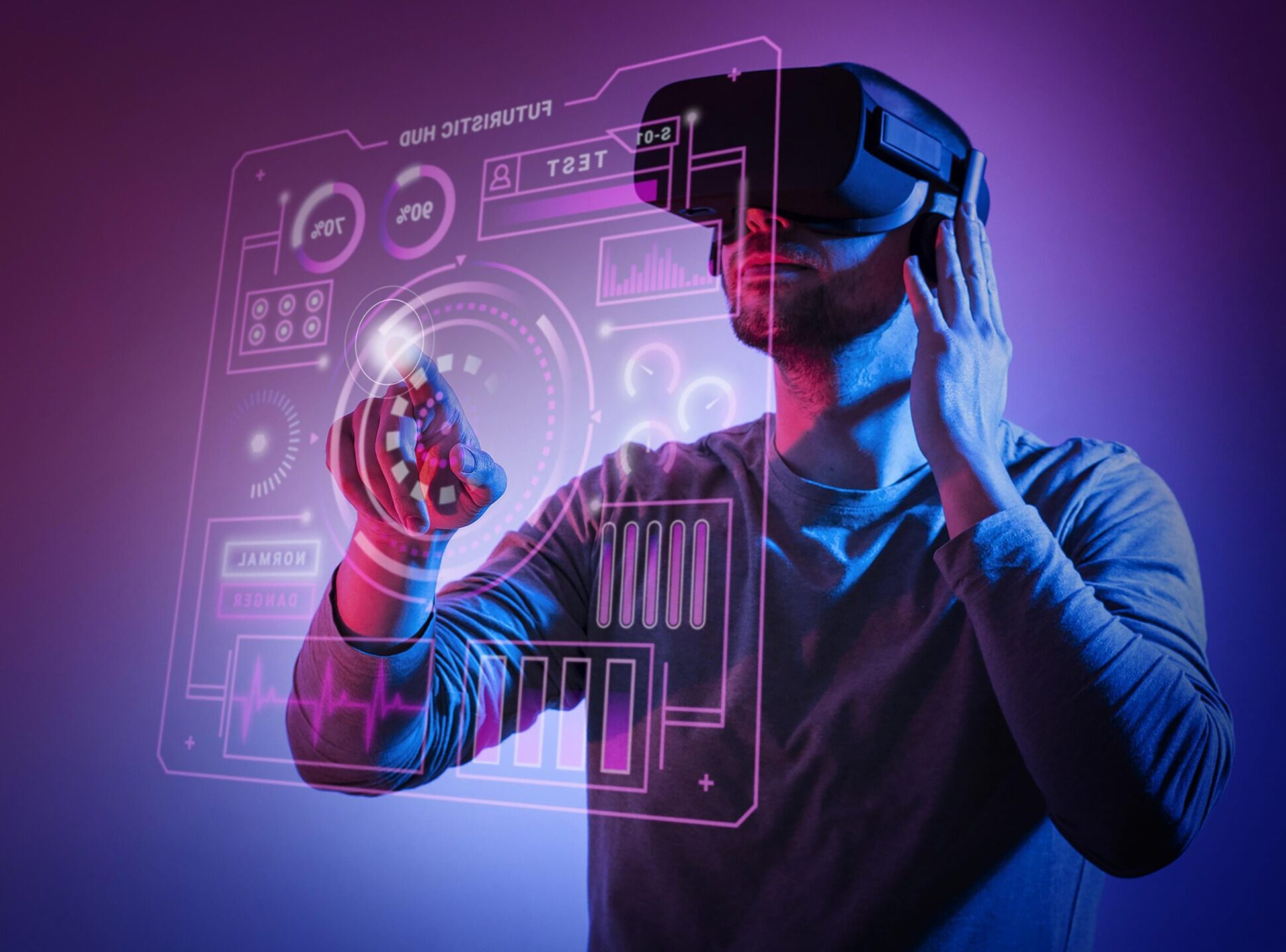The Evolution of technology Through Time
 Technology has evolved over time, starting with the earliest tools and innovations and continuing with the contemporary gadgets and software that we use today. This process is known as technological evolution. Numerous elements, including human needs, creativity, curiosity, scientific advancements, social and economic situations, and environmental issues, have an impact on technology. In addition, technology may have a big influence on politics, the environment, society, and culture. You can read our blog with detailed information on the innovations through year and the history of technology, click here to read. The evolution of technology can be categorised in a variety of ways, including historical eras, technological kinds, and developmental phases. The following is one approach to perhaps summarizing the development of technology:
Technology has evolved over time, starting with the earliest tools and innovations and continuing with the contemporary gadgets and software that we use today. This process is known as technological evolution. Numerous elements, including human needs, creativity, curiosity, scientific advancements, social and economic situations, and environmental issues, have an impact on technology. In addition, technology may have a big influence on politics, the environment, society, and culture. You can read our blog with detailed information on the innovations through year and the history of technology, click here to read. The evolution of technology can be categorised in a variety of ways, including historical eras, technological kinds, and developmental phases. The following is one approach to perhaps summarizing the development of technology:
- Prehistoric technology: This includes things like stone tools, fire, clothes, shelters, hunting and fishing gear, as well as art and music, that were utilized by our earliest ancestors. Prehistoric technology was primarily concerned with survival, adaptation, and exploration of the natural environment.
- Ancient technology: This term refers to the technologies established by ancient civilizations, including writing, mathematics, astronomy, agriculture, irrigation, metallurgy, pottery, textiles, architecture, engineering, medicine, and warfare. The major goals of ancient technology were social and political dominance, organisation, and communication.
- Mediaeval technology: This category includes technologies developed throughout the Middle Ages, such as the compass, printing press, mechanical clock, windmill, waterwheel, gunpowder, cannon, crossbow, and stirrup. Mediaeval technology was primarily concerned with invention, discovery, and the extension of the cultural and geographical globe.
- Industrial technology: This term refers to the technologies that emerged from the Industrial Revolution, including the steam engine, railway, factory, textile machine, telegraph, telephone, electric light, photograph, phonograph, automobile, aeroplane, and radio. Industrial technology was primarily concerned with mechanisation, mass manufacturing, and economic and physical urbanisation.
- Modern technology: This refers to technologies that have arisen since the twentieth century, including computers, the internet, television, satellites, rockets, nuclear power, biotechnology, nanotechnology, artificial intelligence, robots, and social media. Modern technology is primarily built on digitization, globalisation, and the change of the information and knowledge world.
 Instead of being a linear or deterministic process, technology progress is complex and dynamic, including numerous interactions, feedback loops, and impacts amongst different actors, elements, and systems. Technology has the ability to both cause and fix issues, to both open up and close doors, to empower and challenge people and civilizations. Thus, the development of technology raises social, ethical, and political concerns in addition to technical and scientific ones.
Instead of being a linear or deterministic process, technology progress is complex and dynamic, including numerous interactions, feedback loops, and impacts amongst different actors, elements, and systems. Technology has the ability to both cause and fix issues, to both open up and close doors, to empower and challenge people and civilizations. Thus, the development of technology raises social, ethical, and political concerns in addition to technical and scientific ones.
What is the future of technology?
 Since there are so many unknowns and unanswered questions regarding how technology will change and impact our lives in the years to come, the future of technology is an exciting and complicated subject. Among the elements influencing how technology develops in the future are:
Since there are so many unknowns and unanswered questions regarding how technology will change and impact our lives in the years to come, the future of technology is an exciting and complicated subject. Among the elements influencing how technology develops in the future are:
- Scientific breakthroughs and discoveries: Advances in biotechnology, nanotechnology, artificial intelligence, quantum physics, and other domains will open up new avenues for the development of technologies that address issues, expand capacities, and generate possibilities.
- Social and economic needs and expectations: The advancement of health, education, security, productivity, and entertainment are just a few examples of the needs and wants that will drive technology for individuals, groups, and communities. The problems of inequality, poverty, wars, and climate change will also need to be addressed by technology.
- Ethical and regulatory frameworks: The frameworks that control the creation, application, and use of technology will have an impact on it. The values, customs, and concerns of many stakeholders—including governments, corporations, consumers, and civil society—will be reflected in these frameworks. New ethical and legal concerns about privacy, security, responsibility, and human dignity will also be brought up by technology.
- Innovation and creativity: People, groups, and organisations will shape technology via their innovative and creative ideas, products, and services that can satisfy the expectations of the market and society. Because technology offers new tools, platforms, and networks, it will also encourage and facilitate more invention and creativity.
How will technology impact the job market in the future?
- Creation of jobs: As a result of technology, there will be a need for workers with new knowledge and abilities in fields including cybersecurity, software development, data analysis, and digital marketing. New job models that provide employees and employers greater freedom and choice—like gig, remote, and platform work—will also be made possible by technology.
- Job displacement: Routine, manual, or clerical duties are among the jobs that technology will likely replace. These jobs can also be mechanised or digitalized. The need for some jobs—such as those involving fossil fuels, travel agencies, or cashiers—that are impacted by social, economic, or environmental reasons will also shift as a result of technology.
- Job transformation: The majority of employment will be altered by technology, which will change the instruments, abilities, and duties required to carry them out. Technology will improve production, quality, and safety while enhancing human skills. Workers will also need to adjust to new modes of learning, working together, and cooperating as a result of technology.
What revolutionary technology will be available in the future?
 Many ground-breaking developments take place in a variety of fields, including industry, space exploration, renewable energy, healthcare, and telecommunications. Innovations in personalised medicine, fusion energy research, asteroid mining technology, sustainable materials, and quantum communication networks are a few noteworthy breakthroughs.
Many ground-breaking developments take place in a variety of fields, including industry, space exploration, renewable energy, healthcare, and telecommunications. Innovations in personalised medicine, fusion energy research, asteroid mining technology, sustainable materials, and quantum communication networks are a few noteworthy breakthroughs.
- Blockchain: A decentralised data storage and verification system that can facilitate transactions that are more transparent and safe.
- The Internet of Things (IoT): A system of interconnected devices that may gather and share data in order to provide services that are more intelligent and effective.
- Healthcare: Technologies that can enhance illness detection, treatment, and prevention, such as digital health, gene editing, bioprinting, and nanomedicine.
- Generative Adversarial Networks (GANs): An artificial intelligence subtype that opens up new avenues for creativity and innovation by producing lifelike pictures, movies, and sounds from data.

- Artificial and Human Neural Networks: These technologies, which include brain-computer interfaces and neuromorphic computing, can improve cognition and communication by imitating the structure and functions of the brain.
- Incremental Improvements: Technologies like carbon capture, green hydrogen, and quantum batteries that can boost the effectiveness and performance of current systems.
- Space: Technologies like lunar outposts, reusable rockets, and asteroid mining can facilitate further exploration and use of space.
what is quantum computing ?
Using the ideas of quantum physics, quantum computing is a system that can do calculations that are too difficult or time-consuming for traditional computers. Quantum bits, or qubits, are used in quantum computing. Unlike classical bits, which can only be either 0 or 1, quantum bits can exist in a superposition of two states. Quantum computers are able to perform quantum algorithms, which can solve some problems far more quickly than conventional algorithms, by modifying qubits via quantum gates. Artificial intelligence, simulation, machine learning, cryptography, and optimisation are a few fields in which quantum computing may find use.

There are still numerous obstacles to be solved in the context of quantum computing, including noise, decoherence, scalability, and error correction. However, there are also a number of successes and breakthroughs that show off the potential and power of quantum computing, such the creation of quantum networks, software, and hardware by several businesses and organizations. In the near future, quantum computing has the potential to drastically alter the world. It is an exciting and revolutionary technology.
Conclusion
 In summary, the fascinating journey of technological progress is characterized by inventiveness, ingenuity, and flexibility. Technology has continuously changed the way we live, work, and communicate, starting with the simple tools of our ancestors and continuing to the intricately linked digital world we live in today. Though it’s natural to be amazed by our progress, it’s important to understand that this development is continuous, with new discoveries and difficulties appearing on a regular basis. Let’s take use of the benefits that technology offers as we traverse this constantly shifting terrain, but let’s also be aware of its ethical ramifications and the need for responsible stewardship to guarantee a better future for future generations.
In summary, the fascinating journey of technological progress is characterized by inventiveness, ingenuity, and flexibility. Technology has continuously changed the way we live, work, and communicate, starting with the simple tools of our ancestors and continuing to the intricately linked digital world we live in today. Though it’s natural to be amazed by our progress, it’s important to understand that this development is continuous, with new discoveries and difficulties appearing on a regular basis. Let’s take use of the benefits that technology offers as we traverse this constantly shifting terrain, but let’s also be aware of its ethical ramifications and the need for responsible stewardship to guarantee a better future for future generations.
Pingback: The Evolution Of Technology - AtomsWrite
Pingback: Top 10 technology that could change the world - AtomsWrite